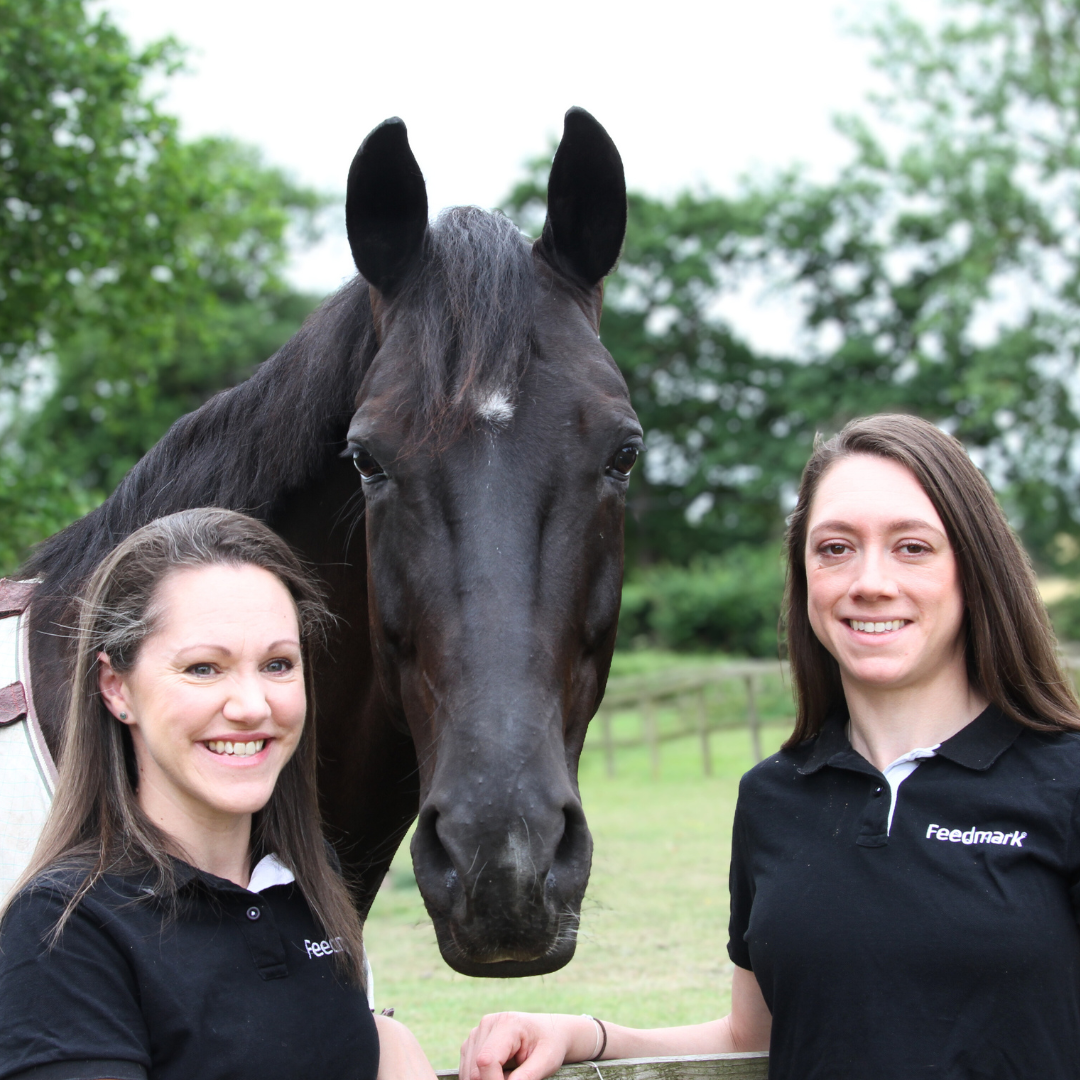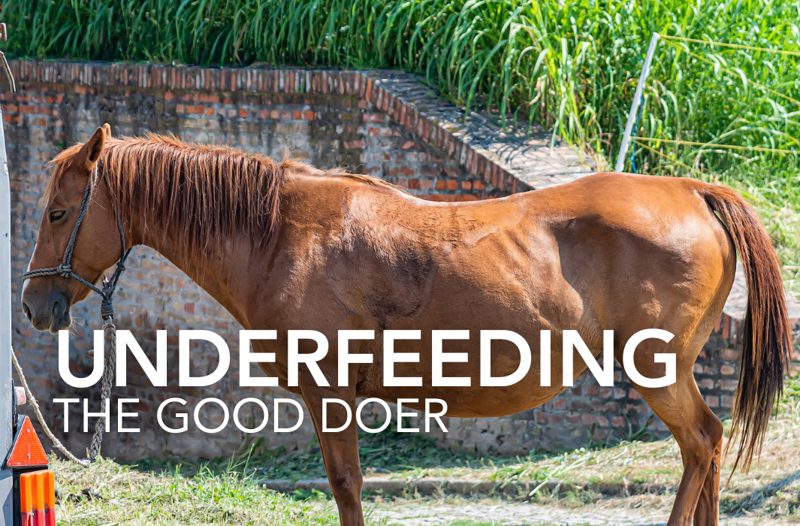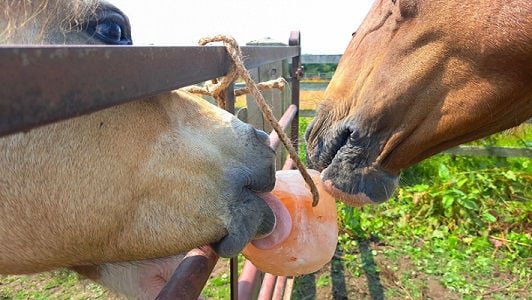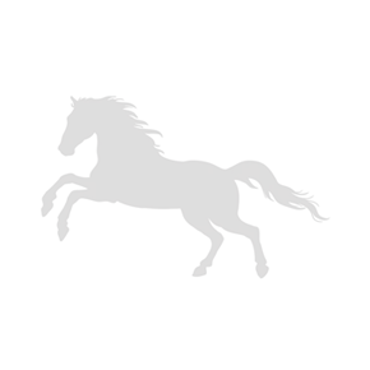At this time of year, when horses have been out enjoying their summer grazing for a few months, it can become apparent that some of them have enjoyed it a little too much. Hard ground in many places has meant less riding and fast work or jumping than many of us would like to do, and the combination of lower than anticipated workload with summer grazing and longer hours turned out can mean that some horses have piled on a few extra kgs. As a healthy weight is so important for many aspects of health and longevity including the respiratory system and joints, as well as the more commonly thought of laminitis and Equine Metabolic Syndrome (EMS), helping them lose weight, or more specifically fat mass, may seem unkind but is necessary.
As your horse or pony starts their weight loss journey there are a few things to consider. While we need to underfeed in terms of digestible energy, to force the horse or pony to use the energy they have stored as fat, it’s important that we don’t underfeed total forage, protein, vitamins and minerals.
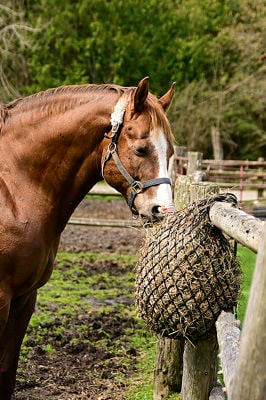
Forage
Unless under the management of a vet, horses and ponies shouldn’t go longer than 4 hours without eating, with some research suggesting even 2 hours without food can be detrimental. Horses’ stomachs produce acid on a continuous basis. Chewing stimulates production of saliva which helps buffer the stomach acid. As such, going without forage for more than a few hours at a time increases the risk of stomach ulcers, and can also cause issues further down the gastro-intestinal tract. Regular forage moving through the hind gut is important for preventing colic, as well as maintaining the balance of the gut microbiota.
However, as the fibre in forage is digested and used to provide energy, providing a regular supply of forage while maintaining an energy deficit is a delicate balance. Eye-balling how much forage to provide is a common mistake and makes it very hard to know whether too much or not enough is being provided. Multiplying your horse’s weight by 0.015 will give you the minimum weight of forage (on a dry matter basis) that needs to be provided per day, including both grazing and hay. Estimating intake when grazing is notoriously challenging, as it depends on many factors including the quality of the grass and not least, the horse or pony’s appetite! When on a weight loss diet many horses, like humans, experience something called rebound hyperphagia. When food is restricted the hormones and neurotransmitters that signal to the brain that the horse is hungry increase. As the levels increase, the horse feels increasingly hungry so when food becomes available again, they eat with such an urgency that they are highly likely to over consume. Strip grazing or muzzles are the two most common ways to reduce grazing when turned out, but which works best depends heavily on the individual horse or pony and yard management logistics.
As forage needs to be available for prolonged periods each day to reduce the risk of colic, ulcers, rebound hyperphagia and maintain mental health, slowing how quickly they can consume the forage provided is often a good solution. The following tips may help:
-
Give several small haynets throughout the day, rather than a big one morning and evening.
-
Use hay nets with smaller holes or put the hay into two haynets to slow down the rate at which they can get it out. For smaller ponies, consider double netting small holed haynets. Research has demonstrated they are more efficient at removing hay from nets than larger horses.
-
Soaking forage significantly increases bulk, so can extend chewing time as well as reducing the digestible energy content of the hay.
-
For horses who need to eat from the ground for respiratory or musculoskeletal issues ground trickle feeder options may be more suitable.
-
Research demonstrates that several small haynets or hay stations placed in different locations around a field or stable slow the rate of feeding, as horses move around between them
-
Mixing good quality straw into the hay helps reduce the digestible energy content without reducing volume. If the horse won’t eat the straw, it can still be beneficial, as it takes longer for the horse to sort through and get the hay out. If you’re interested in adding straw to your horses diet it is important to ensure they have good dental health and seek qualified advice on how to safely introduce and feed straw as part of the diet.
Protein
Horse’s protein requirements are largely dictated by workload, with a diet containing 6-10% protein considered sufficient for horses at rest up to moderate work. When in a calorie deficit loss of muscle mass is a common, and justified, concern. However, while a certain amount of muscle mass can be expected to be lost while in an energy deficit, most horses should still be receiving enough protein from forage if they are consuming no less than 1.5% bodyweight forage per day. While they may require an increased contribution of certain amino acids, commonly lysine and methionine, excess total protein will be metabolised to be used as energy, therefore slowing or even stalling loss of fat mass. Focus on appropriate exercise to keep muscles in use will do more for retention of muscle mass than a high protein diet and will also help towards losing fat mass.
Vitamins and minerals
Despite a lower energy requirement, horses and ponies on a weight loss diet still require consistent levels of vitamins and minerals. Restricted grass intake, replacing grass with hay and soaking hay will reduce the horse’s intake of certain vitamins and minerals, most notably vitamins E and A (as Beta-Carotene) and minerals sodium, potassium, phosphorous, magnesium and calcium. Trace minerals such as manganese, zinc iron and copper are also reduced. Feeding a balancer that has levels of these vitamins and minerals, as well as essential amino acids, with a very low feeding rate to avoid contributing to energy intake is a quick and easy way to address intake of these vital nutrients.
Summary
For horses who need to lose weight, the aim is to underfeed so that the horse is in a calorie deficit, and is therefore forced to use calories stored as fat mass. However, in doing this it is important we don’t underfeed forage below 1.5% bodyweight, unless medically advised and under the supervision of a vet. It is important to reduce the calories provided by the diet, but not the volume of forage. Balancing the horse’s need for a near constant supply of forage with lower calorie intake may require creative solutions to slow intake of the forage provided. While underfeeding protein can be a concern, a diet containing 1.5% bodyweight forage should still provide enough total protein, although a balancer to increase intake of specific amino acids can be helpful. Even with a reduced requirement for energy, horses still to maintain an adequate intake of vitamins and minerals, ideally adapted to reflect the nutrient profile of a restricted diet. A balancer with a low feeding rate is recommended.
As horses’ nutritional requirements are as individual as their personalities, it’s impossible to give hard and fast generalised rules. If you would like any guidance on a weight loss diet for your horse or pony please don’t hesitate to reach out to our registered nutritionists.

